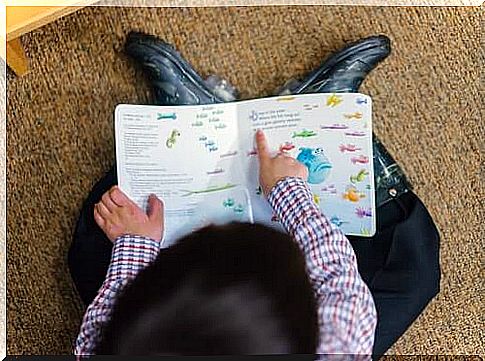5 Books For Children To Lose Their Fear

If an adult mind, on many occasions, suffers to overcome a complicated situation or trauma, imagine the impact that these situations can have on the life of a child. Therefore, we would like to share a series of books so that children lose their fear.
For our little ones, as they develop, everything is new. In other words, while they discover the world, they also know their own fears. Death, monsters, darkness, the feeling of loss or abandonment, loneliness, misunderstanding …

Books for children to lose their fear
A popular song, composed by Jesús Munárriz and Luis Eduardo Aute, said that “everything is in the books”. Indeed, in stories, in stories, in novels and among the pages of millions of books we can find everything, even the best ways to face fears, both for children and adults.
To know this list of books so that children lose their fear, we are going to advance by age. We will start with the youngest, up to 3 years old, and we will reach 12, already in full pre-adolescence.
Goodbye, pacifier!
We start with a story created by the authors Alice Le Hénand and Thierry Bedouet. This book deals with a topic that worries many parents, the key moment when their little ones should give up the pacifier.
Undoubtedly, the pacifier is an important support, since it offers them security and relaxation. However, if it is overused, it can lead to cavities, tooth deformation and other associated problems.
Thanks to this story, young children can learn to assimilate new habits that allow them to relax and calm down without needing a pacifier. All this through the experiences of the quirky and friendly beings that populate the book.
This story also helps children from 0 to 3 years old to learn techniques for overcoming problems and fears. One of the first things that happens is to give up the pacifier, but they also have to overcome the use of a diaper, for example.
Monsters upside down
In this case, the book shows an innovative story focused on children between 3 and 5 years old. Its author is Agnese Baruzzi, who has mixed stories and games with shapes that transform and move.
On each page of the book, the child finds rotating figures capable of turning the world upside down as the little one moves them. In this way, inanimate objects turn into monsters. Without a doubt, it is a nice way, when they begin to handle abstract thinking, to convey the message that they have the ability to change and handle situations.
Tales of how it was
Now we travel to the past with a classic by Rudyard Kipling and his book focused on children between 5 and 8 years old. There is no doubt that infants are specialists in asking questions that appear simple and logical, but are not always easily answered.
In this case, the story that Kipling tells is growing and providing the reader with answers to apparently simple questions, but in the end they are not. Therefore, these answers change the way children see the world, who say goodbye to many problems thanks to knowledge and knowledge.
Monster Atlas
Sandra Lawrence and Stuart Hill created a story about mythological beings. For children ages 7 to 10, it is focused on children starting to walk the path of self-knowledge. A path with invaluable encounters.
The history of the Atlas of the monsters allows the little ones to lose their fear of those fantastic beings used as an analogy. Therefore, children can become explorers by solving puzzles and solving problems that appear.

Earthlings: instructions for use
We finish our list with this book by Muriel Zürcher, focused on children between 10 and 12 years old, in the middle of pre-adolescence. It is said that this work is designed for aliens, so that they learn to avoid the traps that await them if one day they decide to visit our world.
This story progresses, providing answers to the knowledge of the young based on questions that invite reflection, such as the reasons why humans force their young to be tortured in school canteens or why people allow themselves to be enslaved by cats.
These five stories, through proposals as diverse as they are interesting, configure a protected field so that children lose their fear and develop safely and fully, living a happier childhood.









